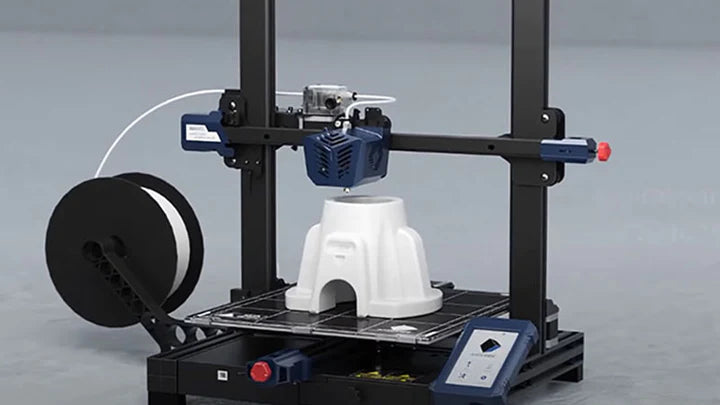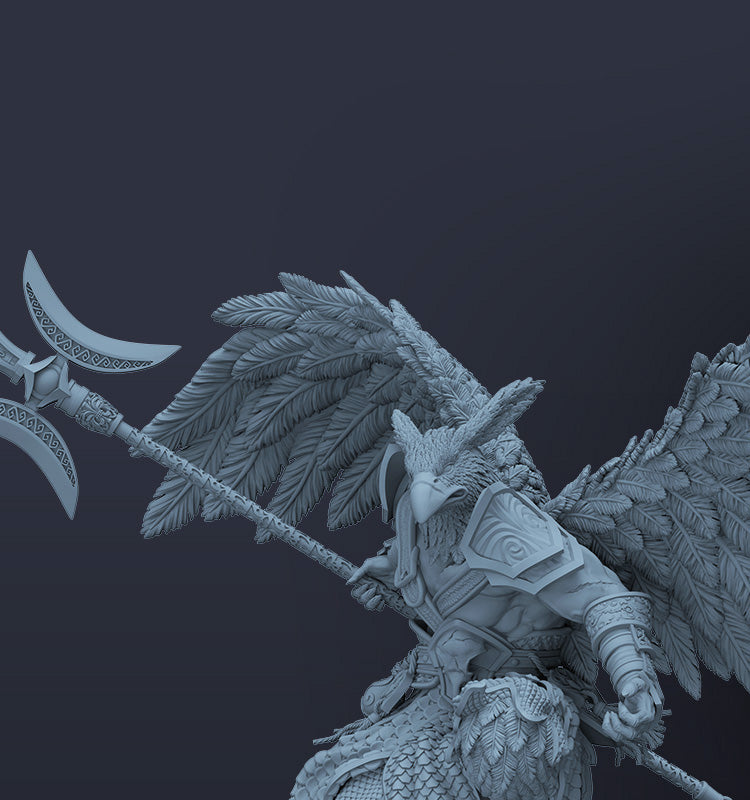3D printing has promoted the innovation and development of many industries, and has gradually attracted the attention and use of more individual users. FDM is the most popular type of desktop printer, which can quickly turn the user's ideal model into a real thing. However, the same model downloaded from the website will have different printing effects. Why? What are the factors that affect the quality of FDM printing models? Can FDM print quality and model accuracy be improved? We'll explore them together in this guide.

FDM 3D Printing Meaning
First, we can understand the basic principles of FDM printing. FDM is fused deposition type, which is a 3D printing technology invented by American scholar Scott Crump in 1988. FDM usually uses high temperature to melt the material into a liquid, which is extruded and solidified by the printing head, and finally forms a solid body. The FDM printer system is mainly composed of five parts: nozzle, filament feeding mechanism, motion mechanism, heating studio and workbench. The materials used in the fused deposition process are divided into two parts: molding material and support material.
What Affects the Quality and Accuracy of FDM Printing?
The FDM printing process is an integrated manufacturing process involving CAD/CAM, data compilation, material preparation, material preparation, process parameter setting and post-processing. Errors in every link will affect the quality and accuracy of FDM printed models. Here are a few main factors we often refer to:

Layer Height:
Layer thickness refers to the thickness of each layer segment during the molding process. Since each layer has a certain thickness, there will be a step phenomenon after the solid surface is formed, which directly affects the dimensional error and surface roughness of the formed part. Generally speaking, the greater the layer thickness, the greater the step height produced on the surface of the model, the worse the surface quality, but the higher the processing efficiency. Therefore, the setting of the layer thickness should be set reasonably according to its own needs. In addition, in order to improve the molding accuracy, after the processing is completed, corresponding post-processing such as grinding and polishing will be carried out to improve the effect of the finished product.

Nozzle Temperature:
The temperature of the nozzle has an effect on both the width of the extruded filament and the bonding properties of the filament. If the nozzle temperature is too low, the viscosity of the filament will increase and the speed of extruding the filament will slow down, causing the nozzle to clog, which will negatively affect FDM printing. At the same time, the bond strength between layers of filament strands will also be reduced, which may cause delamination between layers, and the printed model will appear to be "delaminated".
When the nozzle temperature is too high, the material tends to be liquid, the viscosity coefficient becomes smaller, and the fluidity becomes stronger, resulting in excessive extrusion speed and forming finely controlled strands. During the printing process, the material of the previous layer may not be cooled, and the latter layer is laid on the front layer, causing the material of the previous layer to collapse. Therefore, it is very important to determine the temperature of the nozzle. It must be reasonably selected within a certain range according to the characteristics of each filament to ensure that the extruded filament is in a normal melt flow state. Correctly setting the nozzle temperature can ensure the quality of FDM printing and improve the accuracy of printing models.
Extrusion Speed:
Extrusion speed refers to the speed at which the molten filament in the nozzle is extruded from the nozzle. If the extrusion speed increases, the cross-sectional width of the extruded filament will increase. When the extrusion speed reaches a certain value, the extruded filament will adhere to the cone surface outside the nozzle, forming an extrusion expansion phenomenon. The situation cannot be processed normally.

Filling Rate Should Match the Extrusion Rate:
If the filling speed is faster than the extrusion speed, the material will not be filled enough, it will break and it will be difficult to form. Conversely, if the filling rate is lower than the extrusion rate, the fuse will accumulate on the nozzle, the material distribution on the die surface will be uneven, and swelling will appear on the surface, which will affect the forming quality. The filling speed and extrusion speed should be reasonably matched.
Material Properties:
The properties of FDM materials will directly affect the molding accuracy of the printed model. During the printing process, the material should go through two phase transitions of solid→melt→solid. During the curing process, stress deformation caused by material shrinkage can affect the accuracy of molded parts. Therefore, improving materials and reducing shrinkage is an effective way to improve printing accuracy. At the same time, using high-quality filaments, like Anycubic 1.75mm PLA 3D Printer Filament, not only has a uniform wire diameter, but also ensures smooth filament discharge, and can also reduce the possibility of filament clogging the nozzle during the printing process and improve the success rate of FDM printing.

How to Improve the Quality and Accuracy of FDM Printing
After understanding the printing principle of FDM and the 5 factors that affect the printing effect of FDM, what should we do to improve the quality of our printed models and improve the printing accuracy of FDM?
- Repair STL files through software.
- Select the appropriate printing parameters, including layer thickness, compensation, extrusion speed, filling speed, switch delay, nozzle temperature, molding room temperature, etc.
- Increase the thickness of the first layer and increase the filling interval, which can reduce the degree of bending deformation of the object.
- Keep the platform clean and calibrate the initial height of Z-axis printing.
There are still many ways to improve the accuracy of fdm printers, which should be handled flexibly according to your own needs and actual conditions. While continuously improving the printing level, you will also become one of the experts in FDM printing, which is also the fun of 3D printing.

In addition, a FDM printer with stable performance will definitely be your best supporter in the printing process, such as Anycubic Vyper is our worthy choice of desktop-level FDM printer, which is more stable and durable than many entry-level FDM printers Yes, it can provide us with higher printing quality, which is a machine recognized by many 3D printing enthusiasts.





